The transition to a low carbon society is a significant challenge for the largely rural Western Region. To effectively drive the changes needed for this transition it is important to understand what needs to be addressed at a local level.
With this in mind, the WDC has published seven infographics highlighting county statistics on the areas of energy use which need to change in the transition to low carbon: the built environment; transport and electricity. Understanding where we are now is essential to planning how each county can make the changes needed by 2050.
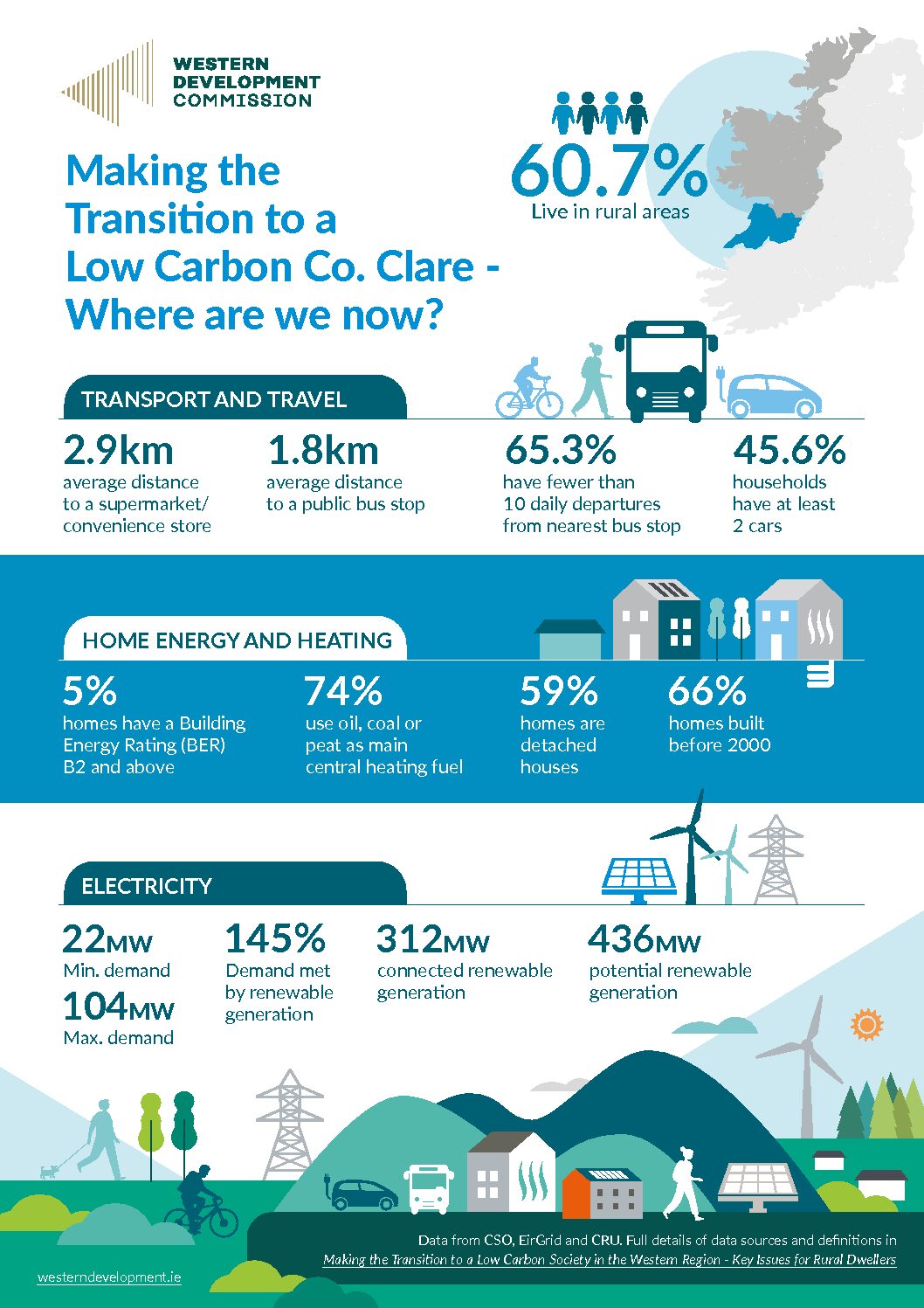
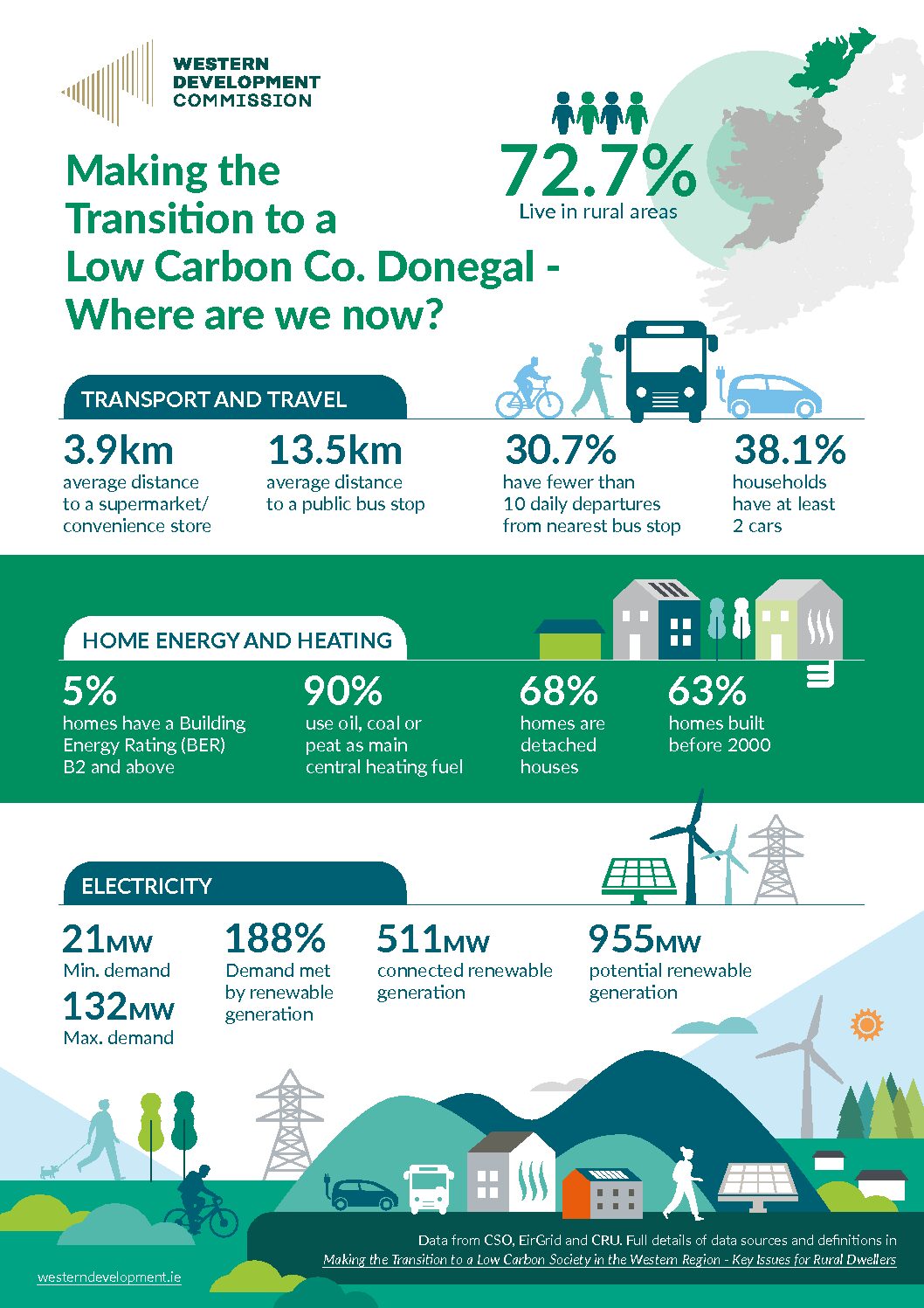
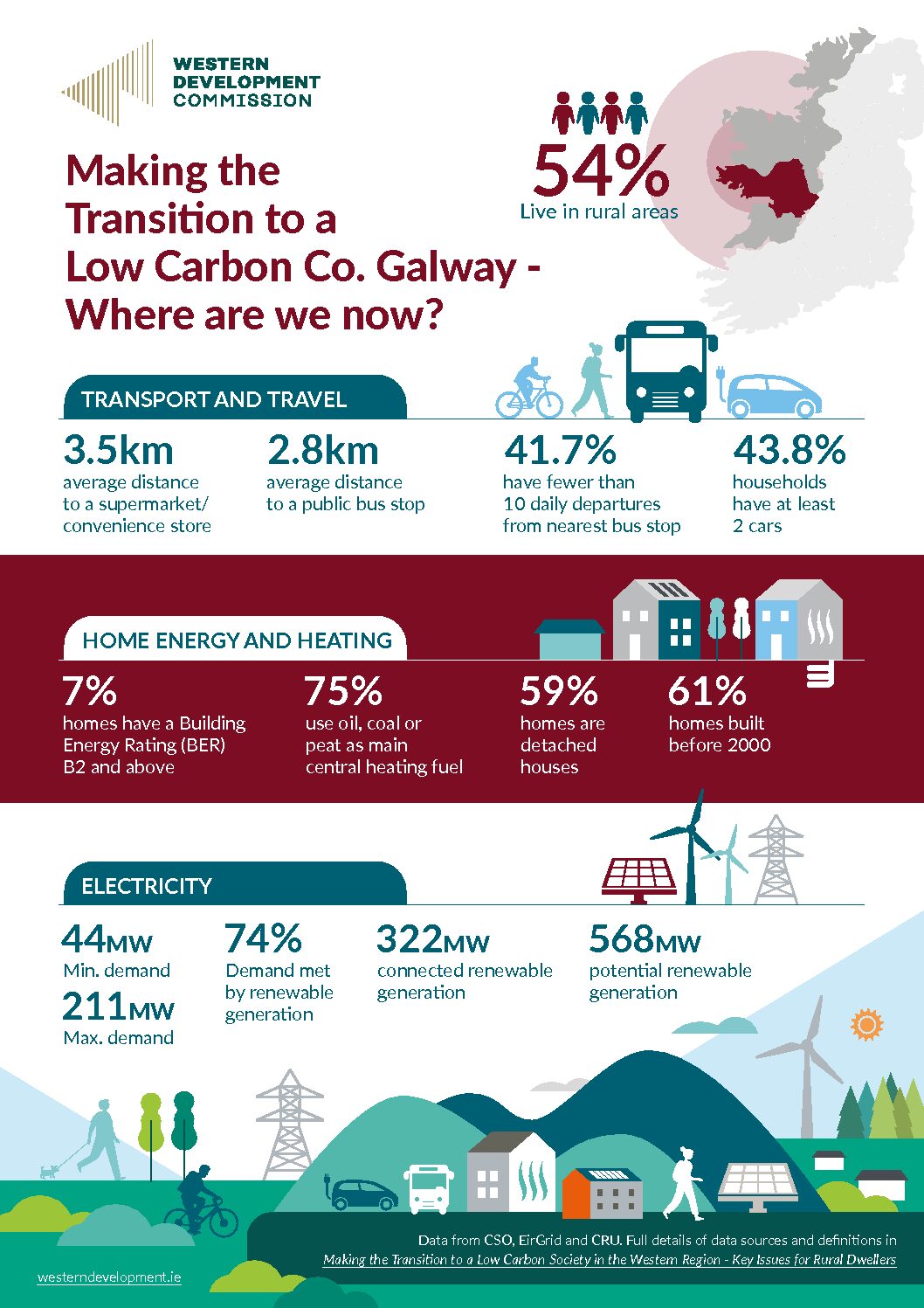
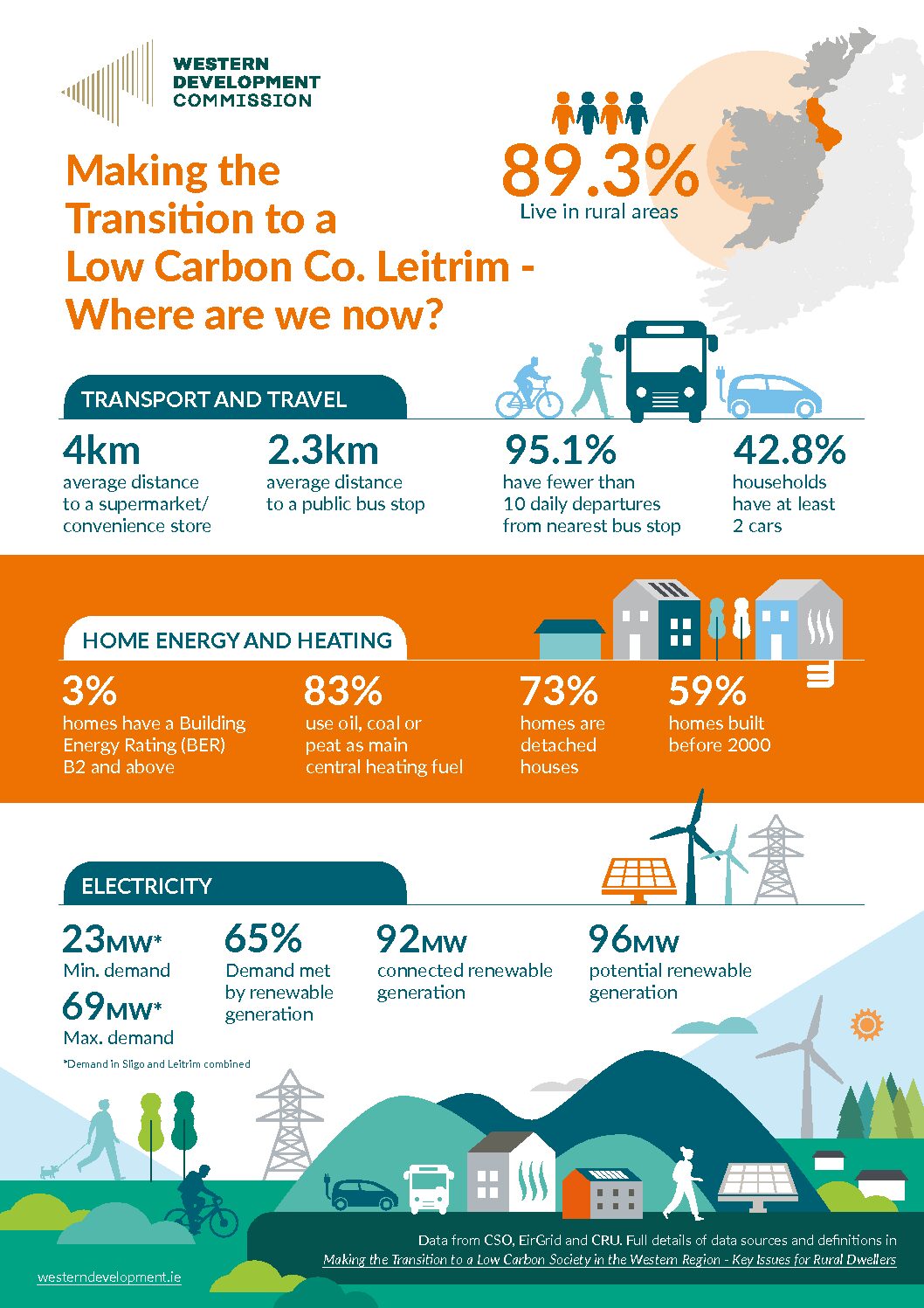
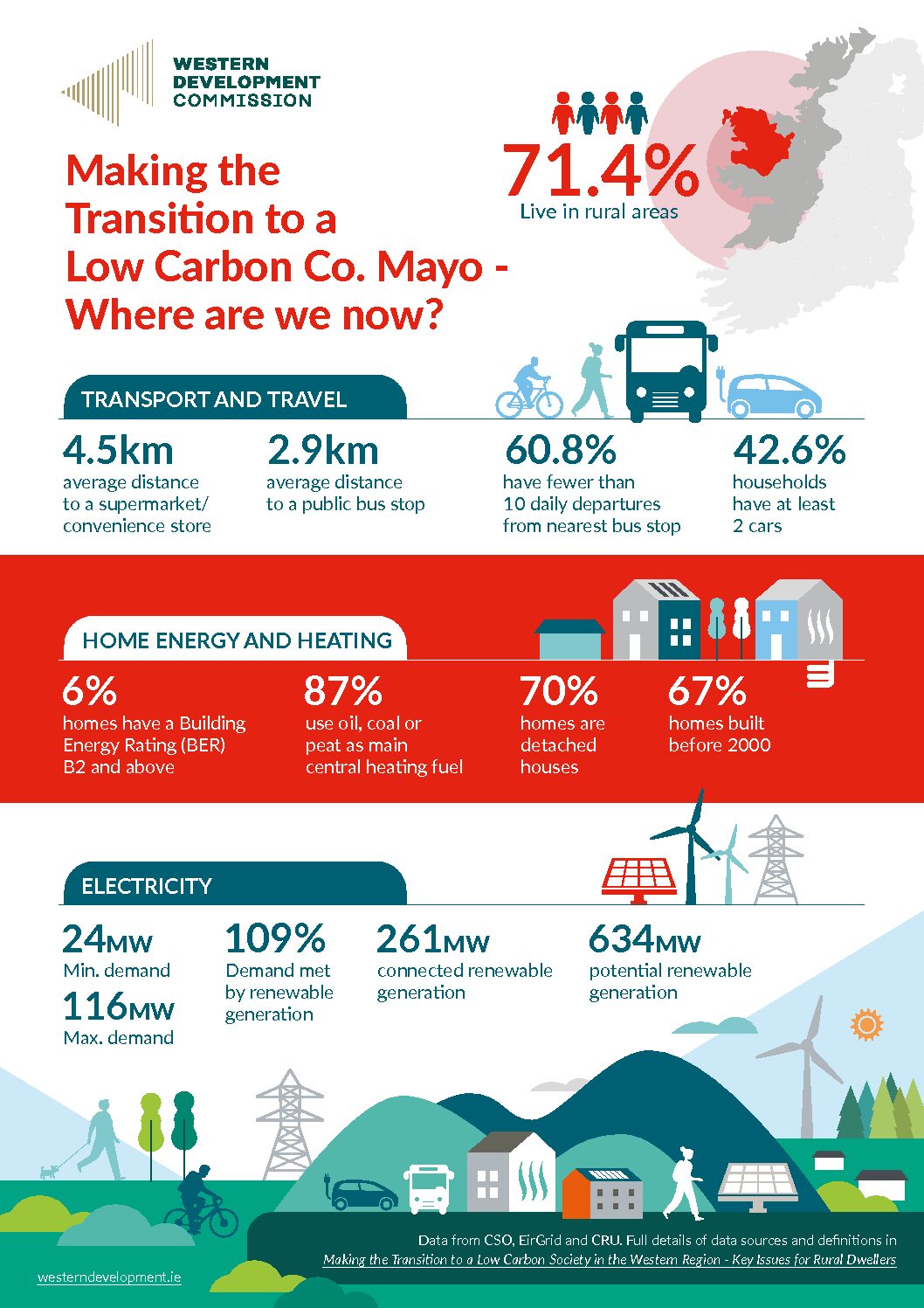
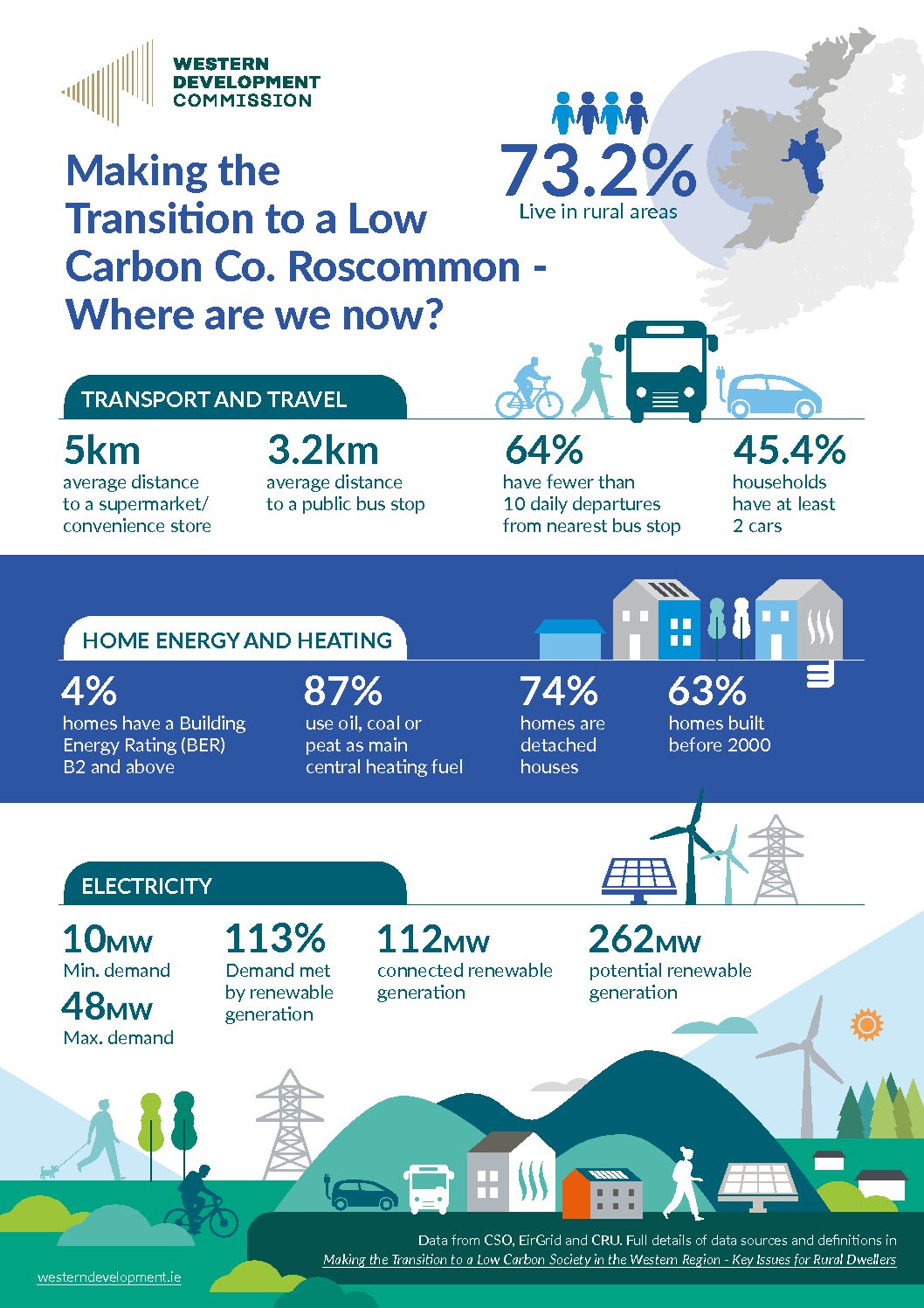
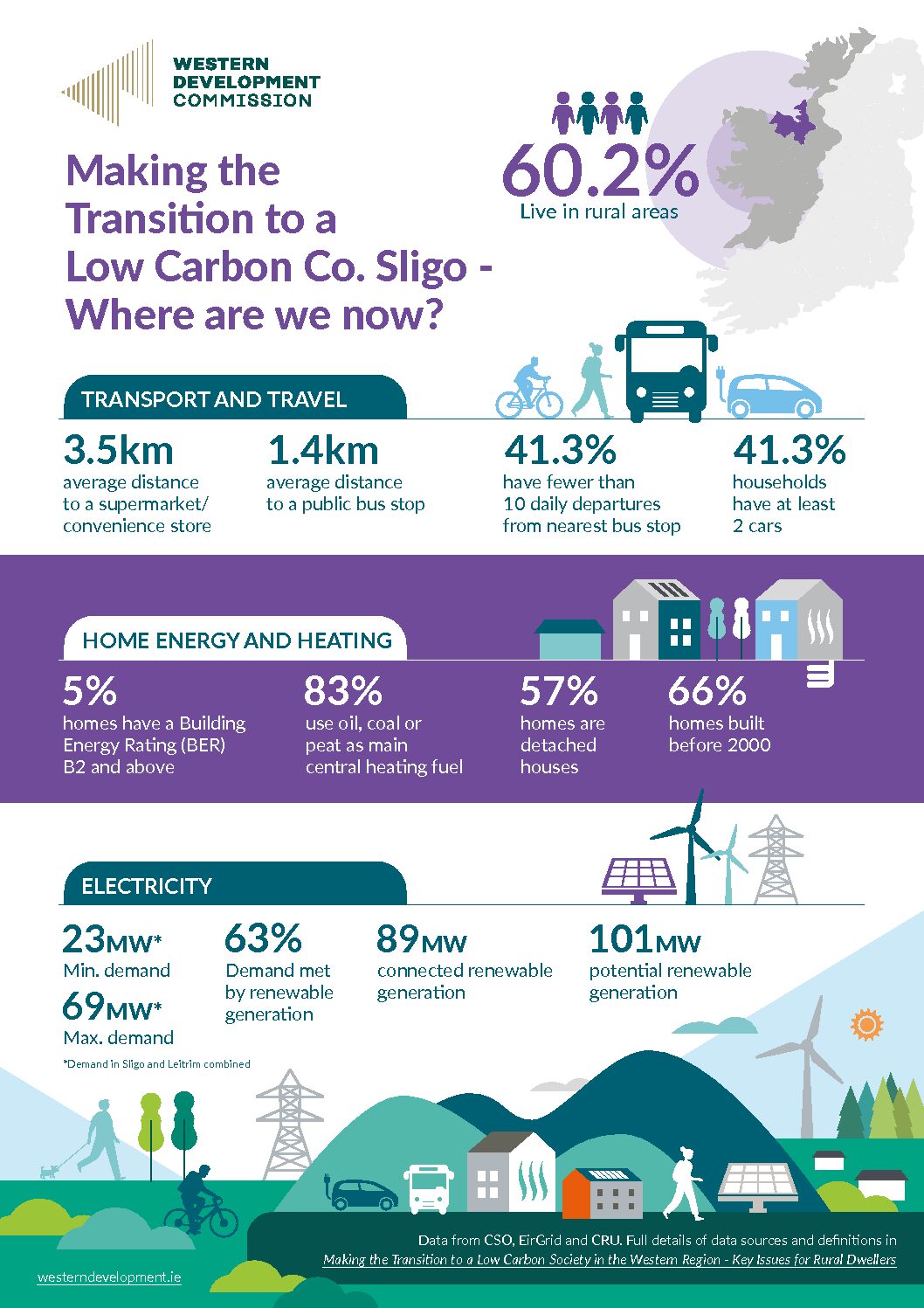
Download the infographic for Donegal here
Download the infographic for Sligo here
Download the infographic for Leitrim here
Download the infographic for Roscommon here
Download the infographic for Mayo here
Download the infographic for Galway here
Download the infographic for Clare here
Download the infographic for the Western Region here.
The information used in the infographics was collected as part of the recently published study of what is needed for a transition to a low carbon economy in the rural Western Region [1]. This work formed part of the Climate Action Plan. In that context, the WDC report (published in August 2020) sought to inform and advocate for the Western Region in the low carbon transition as part of the social and economic development of the seven counties of Clare, Galway, Mayo, Leitrim, Roscommon, Sligo and Donegal.
These new infographics are timely. The draft text of the Climate Action and Low Carbon Development (Amendment) Bill 2020, which provides the legal framework for climate neutrality by 2050, includes a requirement for all Local Authorities to prepare individual Climate Action Plans with measures to mitigate (and adapt to) climate change. This will drive greater engagement with climate issues at county level. These infographics bring together available data [2] to give us a better understanding of where each county is starting from and some of the areas where actions are needed or which may be challenging.
The seven counties of the Western Region are very rural, almost 90% of people in Leitrim live in rural areas [3], while, Galway, the least rural of the Western Region counties still has more than half of its population (54%) living in rural areas. This rurality has implications for the kinds of changes needed to move to a low carbon society. The issues for the transition faced in these counties, and the most suitable solutions, often differ from more densely populated parts of the country.
The Built Environment, Energy Efficiency and Heat
Increasing the efficiency of our buildings by retrofitting, and changing the sources of energy we use to heat them, is essential to the low carbon transition.
The focus of retrofitting is on homes built before 2011, with the most significant improvements required in homes built before 2000. These are likely to require some form of energy efficiency upgrades and fuel switching. While Leitrim has the newest homes (59% built before 2000) more than a third of homes in Mayo were built before 2000 (the national figure is 66%).
Detached houses, which tend to have the most significant energy efficiency and heating requirements, account for 64% of all homes in the Western Region. This is significantly higher than the national average (42%). They account for 74% of homes in Roscommon but only 59% in Clare.
The ambition in the Climate Action Plan and Programme for Government to upgrade at least 500,000 homes to a Building Energy Rating (BER) of at least B2 is very welcome. However, with only 5% of Western Region homes achieving this it means that almost 267,000 homes in the Region need to be retrofitted. At a county level, only 3% of Leitrim homes which have been rated have a BER of B2 and above, while in Galway over 7% of rated homes have a BER of B2 or above. Nationally this figure is 11%. These key housing figures give some sense of the scale of the retrofit challenge.
In addition to energy efficiency retrofits, the heating systems in buildings using the most carbon intensive fuels (oil, coal and peat) will need to be changed. In the Western Region more than 82% of homes use oil, coal or peat for central heating. In contrast only 44% of homes in the rest of the state do. The lack of access to natural gas in the northwest, and in rural areas generally, means there is a high dependence on these fuels. In Donegal 90% of homes use oil, coal or peat as the main central heating fuel, while 87% of Mayo and Roscommon homes use these fuels as do 83% of homes in Sligo and Leitrim. Clearly homes in Western Region counties need to be prioritised in the switch to low carbon heating.
Transport
There are more than half a million people living in the Western Region, and as people living in the Region tend to be at a greater distance from services than those in many other parts of Ireland the journeys they make tend to be longer and more car based.
The infographics show that in most Western Region counties more than 40% of households have access to two or more cars (over 45% of households in Clare and Roscommon do, but only 38% in Donegal). These cars are needed. The average distance to a supermarket or convenience store varies from 3.5km in Galway and Clare (where there are large urban centres of Galway City and Ennis) to 4.5km in Mayo and 5km in Roscommon, the state average is 2.3km.
Greater distance to employment and services reduces our choices about how we travel, while lack of public transport and the distance to public transport services, increases reliance on car travel in rural areas. The difficulty of using public transport is highlighted in the infographic by the average distance to a public bus stop. In Donegal it is 13.5km, and while other counties are closer (3.2km in Roscommon, 2.9km in Mayo but 1.8km in Clare and 1.4km in Sligo) many of these bus stops have few daily departures. For example, the closest public bus stop for 95% of the Leitrim population has fewer than ten daily departures.
The distances to be travelled and poor public transport service provision creates challenges but also opportunities for compact development, remote working from home or in the AEC and national hub network.
Electricity Use and Generation.
More than half (55%) of the generation capacity in the Western Region is renewable and the Western Region is currently producing enough renewable electricity to meet 120% of its own demand. The Region is a net provider of renewable electricity to the rest of the state.
The infographics show that Donegal (511MW), Galway (322MW) and Clare (312MW) have the most connected generation [4]. At the time of calculation (Feb 2020) four of the seven Western Region counties were meeting more than 100% of their electricity demand with renewable electricity generated in their county (Donegal 188%; Clare 145%; Roscommon 113% and Mayo 109%).
All Western Region counties are making a significant contribution to the national target of 70% renewable electricity generation by 2030. This very significant increase in renewable generation is essential to the transition to a low carbon Ireland. Community engagement and support for this increased generation is vital, and the Renewable Energy Support Scheme, which will enable communities to generate both energy and revenue, offers huge potential for rural areas.
Conclusions
Energy and climate action bring important opportunities to our largely rural region. Taking action to address our emissions brings with it the potential for significant benefits in terms of warmer homes, cleaner air, and more sustainable use of our abundant natural resources.
Making the necessary transition will, nonetheless, be a challenge and will require significant changes in the way we live, work and do business. These county low carbon infographics provide data on where we are now and will help to highlight where action is needed or where particular challenges lie.
Download the infographics here.
Read more about making the transition to a low carbon society in the Western Region here. Further discussion of data and sources is available in the background report.
The views expressed here are those of the author and do not necessarily represent or reflect the views of the WDC.
Dr Helen McHenry
Policy Analyst
Sources
- [1] See the publications here.
- [2] All data and sources are available in the background report.
- [3] Using the CSO definition to those living outside towns with a population of 1.500 or over. Read more about it here.
- [4] February 2020.





